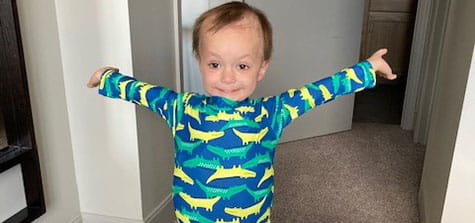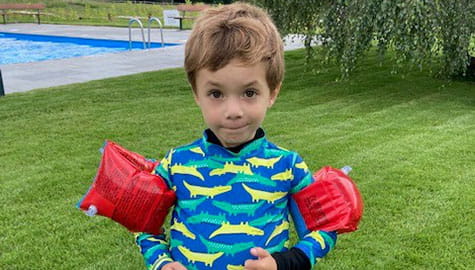George Baker’s Parents Found the Right Doctor and the Right Team at Our Histiocytosis Center
When their son, George, became extremely ill again, Catherine and Sam Baker were devastated.
Diagnosed with Langerhans cell histiocytosis (LCH) when he was 2 years old, George had battled the disorder successfully with chemotherapy and steroids throughout the past year. But when the rare disorder returned, a second round of chemo had begun and was proving even harder than the first. George wasn’t just ill — half his hair fell out and it was difficult for him to walk.
“We prepared for two years of that and honestly didn’t know how we’d cope,” said Catherine.
A few days later, though, everything changed for the better during a phone call with a close family friend. Catherine was explaining how she felt strongly that they needed to do something else to help George. She knew this couldn’t be it for her son and their family, but didn’t know where to start.
Minutes after they hung up, she received an email with a hyperlink to the Cincinnati Children's website. Her friend’s grandson had been treated here for an entirely different condition, but she wrote that “the hospital had been wonderful and this may be somewhere to start.”
Catherine opened the website and spent the next half hour reading everything she could.
“There was Dr. Kumar’s bio and a summary of his experience treating children with LCH, and how he and his team treated the disease differently to almost every other hospital in the world. It seemed too good to be true,” said Catherine.
“I then drafted an email directly to Dr. Kumar explaining our situation and asking if he could help us.”
A few hours later Catherine was shocked to receive an email from Ashish Kumar, MD, PhD, co-director of the Histiocytosis Center.
“I don’t think I even expected a reply; or at least certainly not a reply from Dr. Kumar himself,” said Catherine. “Over the next three days we corresponded back and forth. He answered all our questions thoroughly, clearly and with kindness.
“I remember thinking, this is going to be the man that will save my son.”





